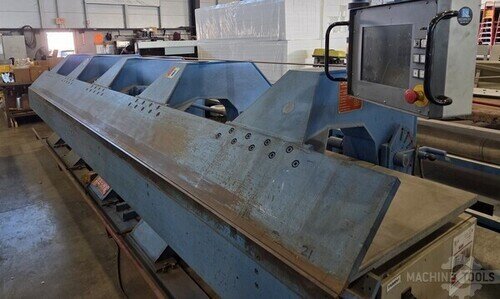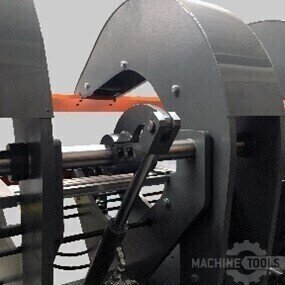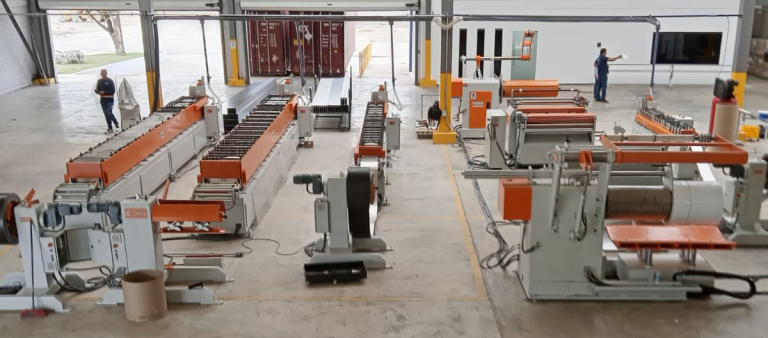Understanding the Basics: Erbend and Press Brake
As someone deeply invested in the modernization of production lines in roofing and façade shops, I’ve seen firsthand the pivotal role that equipment choice plays in shaping efficiency and safety. Erbend folders and press brakes are two stalwarts in metal forming, each with unique attributes. Erbend excels in folding, offering precision and versatility, while press brakes are renowned for their bending capabilities. Understanding these differences is crucial for shop owners aiming to optimize their operations.
Real-World Insights: Improving Efficiency and Reducing Waste
On the shop floors from Chicago to across the Midwest, I’ve observed how the right equipment can dramatically reduce waste. For instance, Erbend folders, with their precise folding technology, minimize material wastage by ensuring exact cuts and folds. This precision directly translates to cost savings and increased throughput. In comparison, press brakes, when properly configured, can enhance efficiency in operations requiring heavy-duty bending.
Evaluating Precision: Slitting, Forming, and Folding
Precision is paramount in roofing and façade applications. Erbend machines provide exceptional accuracy in forming and folding, making them ideal for complex profiles. In contrast, press brakes offer precision in slitting and forming thicker materials. Choosing the right tool often depends on the specific demands of your projects. For example, a shop focusing on intricate façade panels might benefit more from an Erbend, while one dealing with structural components might lean towards a press brake.
Enhancing Safety in Roofing Shops: A Practical Approach
Safety is non-negotiable in any shop. Erbend folders inherently offer a safer environment due to their design, which reduces pinch points and operator intervention. Press brakes, while powerful, require strict adherence to safety protocols. Retrofitting older machines with modern safety features or opting for servo-driven systems can significantly enhance safety. It’s about creating a workspace where efficiency doesn’t compromise well-being.
ERMAKSAN POWER-BEND FALCON BENDING MACHING
Integrating Automation: Workflow and Throughput Optimization
Automation is the future of manufacturing, and integrating it into your workflow can optimize throughput. Automated coil systems and panel benders can streamline operations, reducing the need for manual intervention and minimizing errors. For example, a customer in Milwaukee saw a 30% increase in production after automating their coil handling and folding processes. Automation not only boosts output but also frees up skilled operators for more complex tasks.
When to Upgrade: Assessing Your Current Equipment
Knowing when to upgrade is crucial. If your current equipment struggles with precision, speed, or safety, it might be time to consider an upgrade. For instance, if your press brake frequently requires maintenance or produces inconsistent results, exploring newer models with advanced control systems could be beneficial. Similarly, if your Erbend folder can’t keep up with demand, evaluating the latest models might offer a solution.
FAQ Section
When is the right time to upgrade a roll former or folder?
Assess your equipment’s performance and maintenance costs. Frequent breakdowns or inability to meet production targets indicate it might be time for an upgrade.
How do servo-driven folders compare to hydraulic systems?
Servo-driven folders offer greater precision and energy efficiency, with smoother operation and reduced noise compared to hydraulic systems.
What’s the difference between a combi-beam and double folder?
A combi-beam combines folding and bending capabilities, while a double folder allows for bending in two directions without repositioning the material.
What are signs a roll forming line is no longer cost-effective?
Increased scrap rates, frequent downtime, and inability to meet current production demands are clear indicators.
How can coil automation reduce operator requirements?
Automation reduces the need for manual handling, allowing operators to focus on quality control and other critical tasks.
What kind of maintenance schedule do panel benders need?
Regular maintenance every 3-6 months, including lubrication, alignment checks, and software updates, ensures optimal performance.
Can older shears be upgraded with safety and accuracy features?
Yes, retrofitting older shears with modern controls and safety features can enhance both performance and safety.
Thank you for taking the time to explore these insights. If you’re considering upgrading your equipment or simply want to discuss your current setup, don’t hesitate to reach out. I’m here to help you navigate these decisions with confidence and ensure your shop thrives in the long run. Feel free to contact me for a walkthrough, demo, or quote. Your success is my priority.
Pat O’Neill
National Product Manager and Regional Sales Executive
pat@mac-tech.com
414-232-7929
Get Weekly Mac-Tech News & Updates







